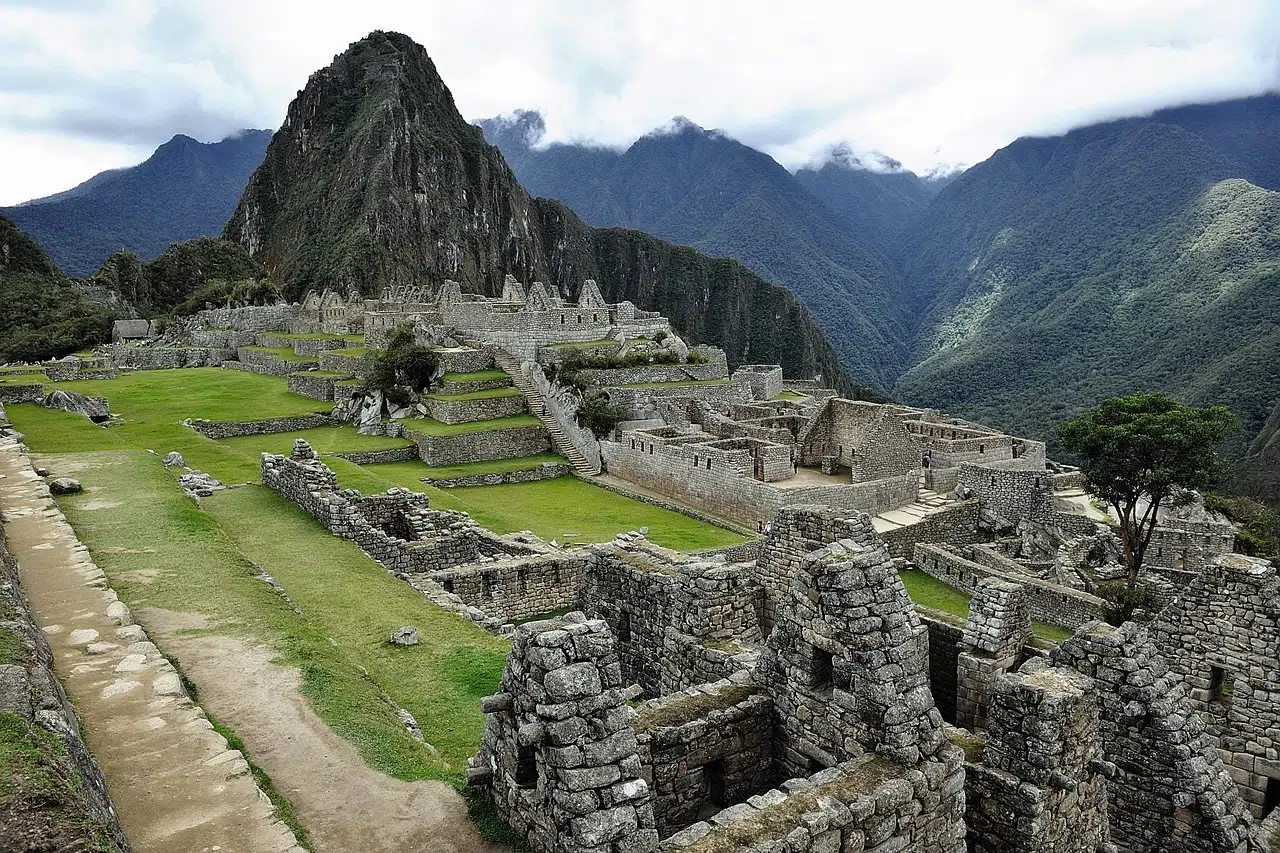The Salkantay Trek is a breathtaking journey through some of Peru’s most diverse landscapes, from snow-capped mountains to lush jungles. However, the weather along the trek can be unpredictable and varies significantly depending on the altitude and time of year. In this guide, we’ll break down the Salkantay Trek weather patterns, what to expect during each season, and how to pack and prepare for the conditions you’ll encounter.
I’ll never forget standing at the Salkantay Pass (4,600m) as hail pelted my face—only to strip down to a T-shirt hours later in the jungle humidity. The Salkantay Trek’s weather is unpredictable, extreme, and breathtakingly diverse. If you’re planning this adventure, understanding the climate is the difference between misery and magic. Here’s everything I learned from trekking through rain, snow, and scorching sun—plus tips to outsmart the elements.
Table of Contents
Why Salkantay’s Weather is Wild (And How to Prep)
This trek smashes you through four microclimates in 5 days:
- High Andes (Day 1–2): Freezing nights, potential snow, and brutal UV rays.
- Cloud Forest (Day 3): Misty, damp, and moody—like hiking through a fairytale.
- Jungle (Day 4–5): Sweltering heat, sudden downpours, and mosquitos.
Key Challenges:
- Altitude sickness (thin air at 4,600m + rapid weather shifts = nasty headaches).
- Temperature swings (from -5°C at dawn to 25°C by noon).
- Rainy season surprises (trails turn to sludge, but crowds vanish).
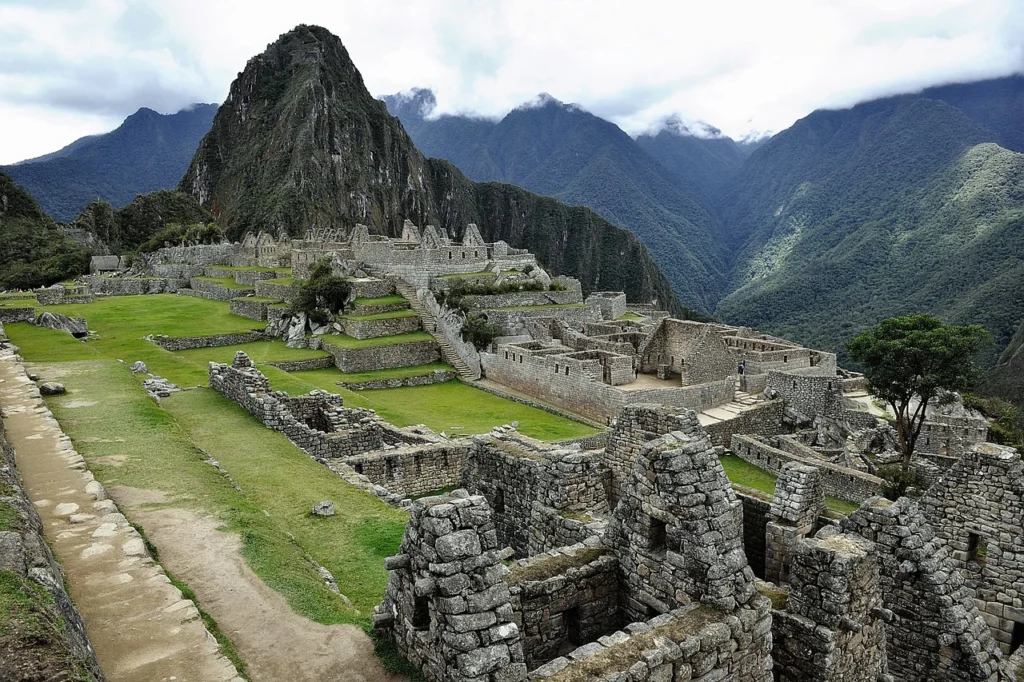
Salkantay Trek Weather by Month
Dry Season (April–October): The Classic Choice
- Pros: Sunny skies, stable trails, epic mountain views.
- Cons: Crowds, frigid nights (below freezing at high camps).
- Packing Musts:
- Down jacket for pre-dawn starts.
- Sunglasses (UV400)—snow glare at the pass is blinding.
Best Months: May–September (peak clarity for Salkantay glacier photos).
Wet Season (November–March): Adventure for the Bold
- Pros: Lush scenery, solitude, cheaper permits.
- Cons: Slippery trails, leeches in jungle sections, frequent rain.
- Packing Musts:
- Waterproof boots (not water-resistant—trust me).
- Quick-dry clothes (cotton = hypothermia risk).
Hidden Gem: February—fewest tourists, but some operators close for trail maintenance.
Temperature Breakdown (What to Expect Daily)
| Location | Day Temp (°C) | Night Temp (°C) | Weather Quirks |
|---|---|---|---|
| Soraypampa (Day 1) | 10–15 | -5–0 | Frosty mornings, strong winds |
| Salkantay Pass (Day 2) | 5–10 | -10–-5 | Snow possible year-round |
| Collpapampa (Day 3) | 18–25 | 10–15 | Misty, occasional drizzle |
| Santa Teresa (Day 4) | 25–30 | 15–20 | Humid, jungle showers |
Pro Tip: Layer like an onion—I wore a thermal top, fleece, and shell jacket at the pass, then stripped to a tank top by lunch.
Weather Hacks I Wish I Knew Sooner
- Start Early: Afternoon storms are routine—hit the trail by 5 AM to dodge downpours.
- Cover Up at Altitude: Sunburn + altitude = misery. I used a buff + SPF 50 religiously.
- Sleep with Your Electronics: Cold drains batteries. Keep your phone in your sleeping bag.
- Embrace the Poncho: Even with a fancy rain jacket, a $2 plastic poncho saved my pack.
- Check the Moon Phase: Full-moon treks mean icy nights but epic stargazing.
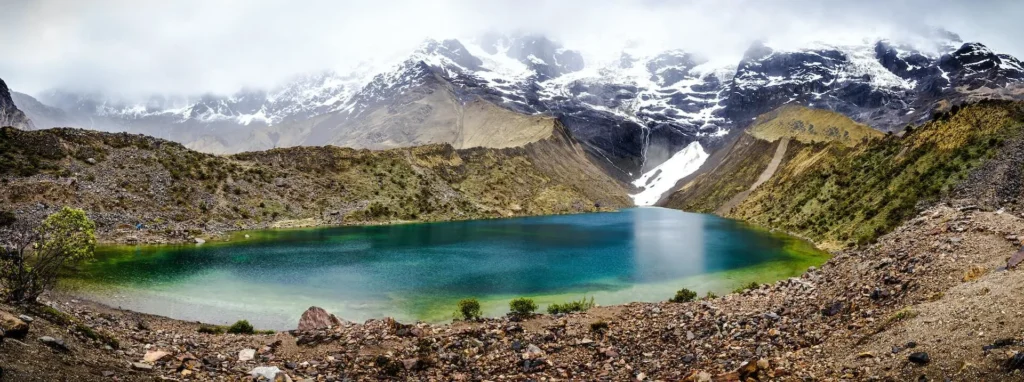
Worst Weather Disasters (And How to Avoid Them)
- Hypothermia Close Call: A hiker in my group wore cotton sweatshirts—they spent Day 2 shivering in a emergency blanket. Fix: Pack synthetic or wool only.
- Whiteout at the Pass: Zero visibility happens. Fix: Guides know alternate routes—stick close.
- Jungle Flash Floods: A 2023 group got stranded overnight. Fix: Check Senamhi (Peru’s weather org) before Day 4.
Why is Understanding the Salkantay Trek Weather Important?
The weather on the Salkantay Trek can greatly impact your experience. Here’s why it’s crucial to be prepared:
- Variable Conditions: You’ll encounter everything from freezing temperatures at high altitudes to warm, humid weather in the jungle.
- Safety: Proper preparation can help you avoid risks like hypothermia, heat exhaustion, or slippery trails.
- Comfort: Knowing what to expect allows you to pack the right gear and clothing, ensuring a more enjoyable trek.
Salkantay Trek Weather: Seasonal Breakdown
The weather on the Salkantay Trek varies by season. Here’s what you can expect during each:
1. Dry Season (April to October)
- Weather: Sunny days with clear skies and cold nights.
- Daytime Temperatures: 15-20°C (59-68°F) in lower areas; 5-10°C (41-50°F) at higher altitudes.
- Nighttime Temperatures: Can drop below freezing, especially at high campsites like Soraypampa.
- Rainfall: Minimal, making this the best time for trekking.
- Trail Conditions: Dry and stable, but dusty in some sections.
2. Wet Season (November to March)
- Weather: Frequent rain, especially in the afternoons.
- Daytime Temperatures: 18-22°C (64-72°F) in lower areas; 8-12°C (46-54°F) at higher altitudes.
- Nighttime Temperatures: Cool but rarely freezing.
- Rainfall: Heavy, particularly in January and February.
- Trail Conditions: Muddy and slippery, with a higher risk of landslides.
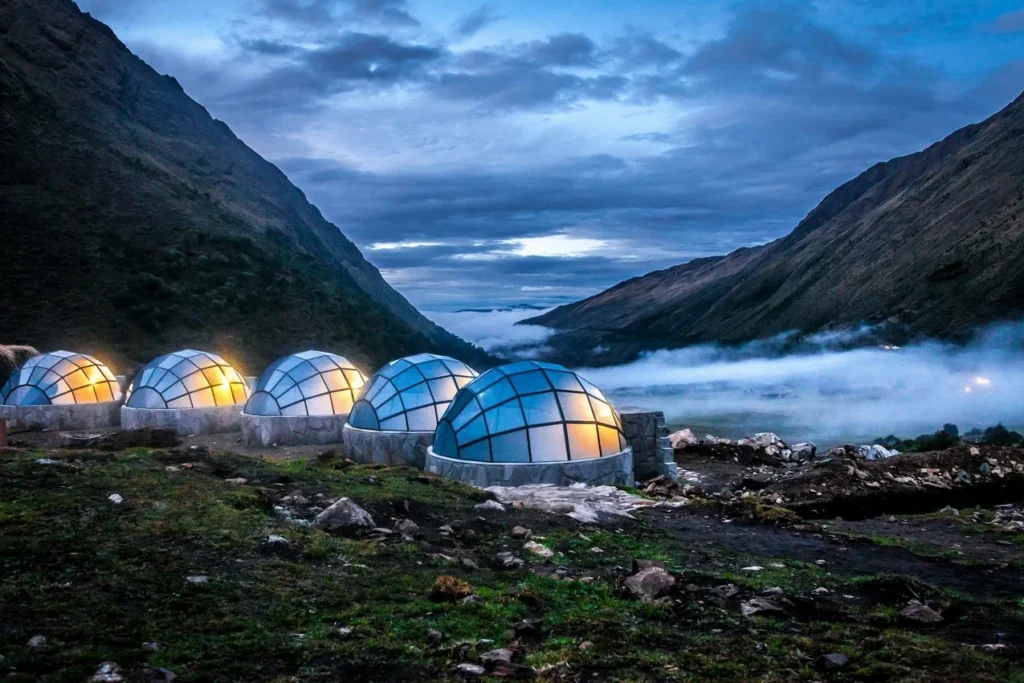
Salkantay Trek Weather: Daily Variations
The weather can change dramatically throughout the day, especially at different altitudes. Here’s a day-by-day breakdown of what to expect:
Day 1: Mollepata to Soraypampa
- Weather: Cool mornings and evenings, with warm afternoons.
- Altitude: 2,800m to 3,900m (9,186ft to 12,795ft).
- Conditions: Clear skies in the dry season; possible rain in the wet season.
Day 2: Soraypampa to Collpapampa
- Weather: Freezing temperatures at the Salkantay Pass (4,630m / 15,190ft), warming up as you descend.
- Conditions: Windy and cold at the pass; possible snow or hail in the dry season.
Day 3: Collpapampa to La Playa
- Weather: Warm and humid as you enter the jungle.
- Conditions: Possible rain, especially in the wet season.
Day 4: La Playa to Aguas Calientes
- Weather: Warm and humid, with occasional rain.
- Conditions: Mostly stable trails, but muddy in the wet season.
Day 5: Machu Picchu
- Weather: Mild and pleasant, with a chance of rain.
- Conditions: Early mornings can be foggy, but the skies often clear by midday.
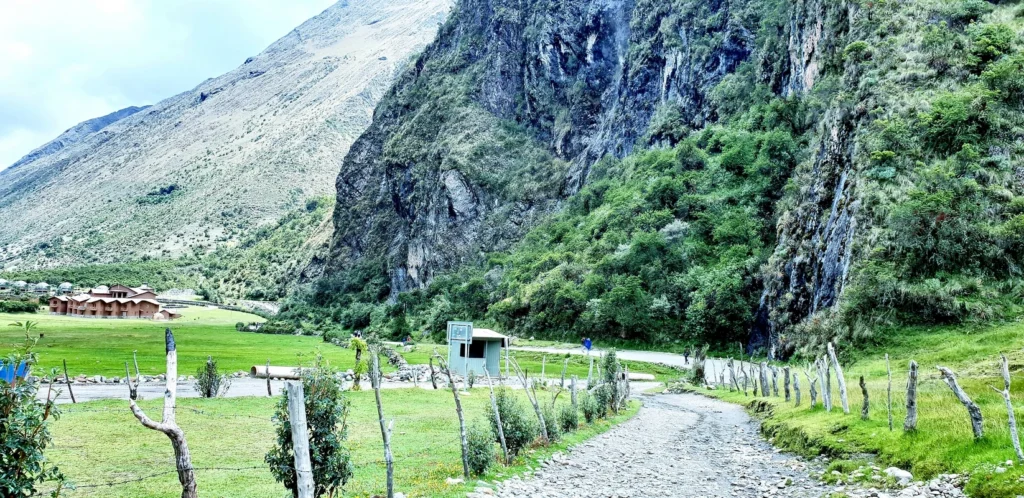
How to Prepare for the Salkantay Trek Weather
Here are some essential tips to help you prepare for the weather conditions on the Salkantay Trek:
- Pack Layers: Bring moisture-wicking base layers, insulating mid-layers, and a waterproof outer layer.
- Protect Against the Sun: Pack sunscreen, sunglasses, and a wide-brimmed hat for sunny days.
- Stay Dry: Use waterproof gear, including a rain jacket, pants, and dry bags for your belongings.
- Prepare for Cold Nights: Bring a warm sleeping bag (rated for at least -10°C / 14°F) and thermal clothing.
- Check the Forecast: Before your trek, check the weather forecast for Cusco and the Salkantay region.
What to Pack for the Salkantay Trek Weather
Here’s a quick checklist of weather-specific items to pack:
- Dry Season: Warm layers, a down jacket, gloves, and a warm hat.
- Wet Season: Waterproof jacket and pants, quick-drying clothing, and extra socks.
- Year-Round: Sunscreen, lip balm, and a reusable water bottle.
Frequently Asked Questions About Salkantay Trek Weather
1. What is the best time to do the Salkantay Trek?
The dry season (April to October) is the best time, with stable weather and clear skies.
2. Can I do the Salkantay Trek in the rainy season?
Yes, but be prepared for muddy trails, frequent rain, and potential delays.
3. How cold does it get on the Salkantay Trek?
Temperatures can drop below freezing at high altitudes, especially at night.
4. What should I wear for the Salkantay Trek?
Dress in layers and bring waterproof gear to adapt to changing conditions.
Ready to Tackle the Salkantay Trek?
Now that you know what to expect from the Salkantay Trek weather, it’s time to start planning your adventure! Whether you choose the dry season for clear skies or the wet season for lush landscapes, proper preparation will ensure a safe and enjoyable trek.
📌 Pro Tip: Download our free Salkantay Trek packing checklist to ensure you’re ready for any weather. And if you’re ready to book your trek, check out our exclusive Salkantay Trek packages for the best deals and expert guides.


